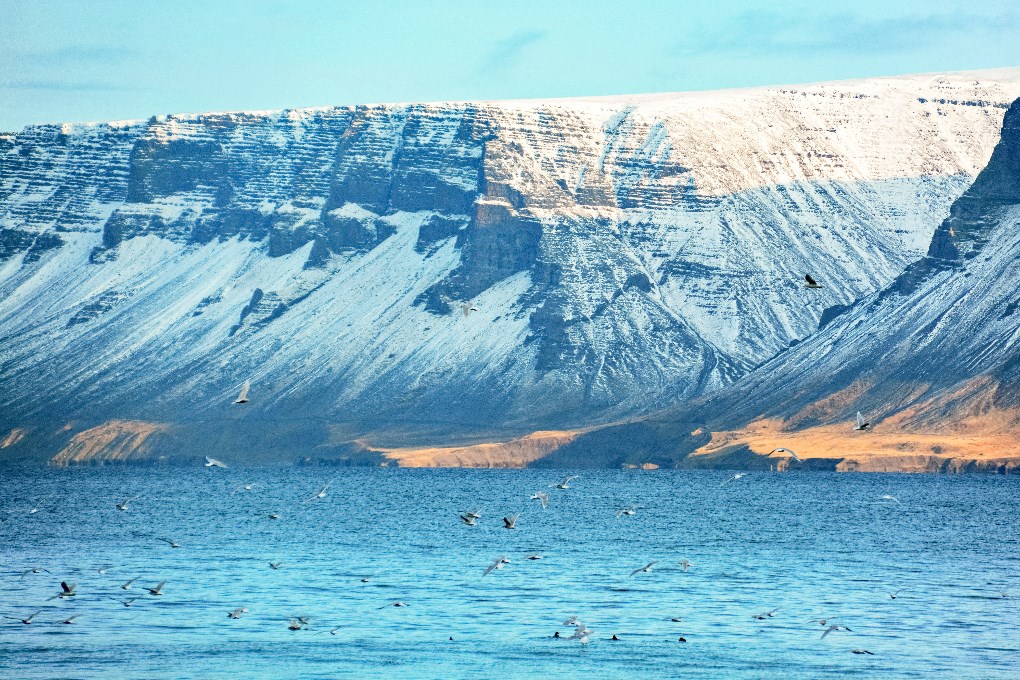
Table of Contents
- What and Where are the Westfjords of Iceland?
- How to Visit the Westfjords of Iceland
- How to Get Around in the Westfjords
- Driving in the Westfjords
- The Best Time to Visit the Westfjords
- Planning Your Iceland Westfjords Itinerary: What to See and Do
- Map of the Westfjords
- Are the Westfjords of Iceland Worth It?
- Start Your Westfjords Adventure with Lava Car Rental
If you’re considering taking a road trip while visiting Iceland, you have a lot of options. There’s the Ring Road, which allows you to see all of the island’s top spots as you circle the entire country. There’s the Golden Circle, which is just a short drive from Reykjavik and Keflavik, and which can be done in a mere day. There are routes that will take you to the southern coast and some that take you to the arctic — but driving the Westfjords of Iceland is a singular experience that’s unlike anything you'll find elsewhere.
Whether you want to spend just a day or two in Iceland’s Westfjords, or you want to plan an entire Westfjords road trip, here’s everything you need to know about driving to and around this region of the country. We’ll answer questions like …
- Do I need a 4x4 to drive the Iceland Westfjords by car?
- What is there to see and do during an Iceland Westfjords road trip?
- Is visiting the Westfjords worth it?
- Can I really only visit the Westfjords during the summer?
Keep reading to learn all this and more.
What and Where are the Westfjords of Iceland?
If you’re unfamiliar with this section of the country, the Westfjords refers to a region in northwest Iceland, which is known for being remote and relatively unexplored. It’s where you can go to find fewer crowds, even during peak travel season in Iceland, and it's renowned for its spectacular landscapes and dramatic scenery, as well as its wildlife watching (the puffins are a favourite!).
The Westfjords are, as the name suggests, a series of fjords in the northwest, and the region consists of three distinct areas jutting out from a peninsula. Situated on Iceland’s western coastline, facing Greenland, the region consists mainly of Hornstrandir Nature Reserve, Isafjordur, Thingeyri and Patreksfjordur.
How to Visit the Westfjords of Iceland
While the Westfjords are pretty remote (located more than 200 kilometres or more than 120 miles from Reykjavik, and more than 300 kilometres or more than 180 miles from Akureyri), you can still easily reach the region a few different ways. The region is accessible by car, plane, bus and even ferry.
If you want to rent a car after arriving in Iceland and drive to the Westfjords (our top pick, as this allows you to see all of the region at your own pace, plus make some stop-offs at notable landmarks along the way), you can expect the drive to take at least a few hours. If you stopped over in Reykjavik before driving to the Westfjords, you can expect the drive to take up to five hours. No matter where you're driving from, though, you’ll need to take the Ring Road to Route 60, which will then take you to the Westfjords.
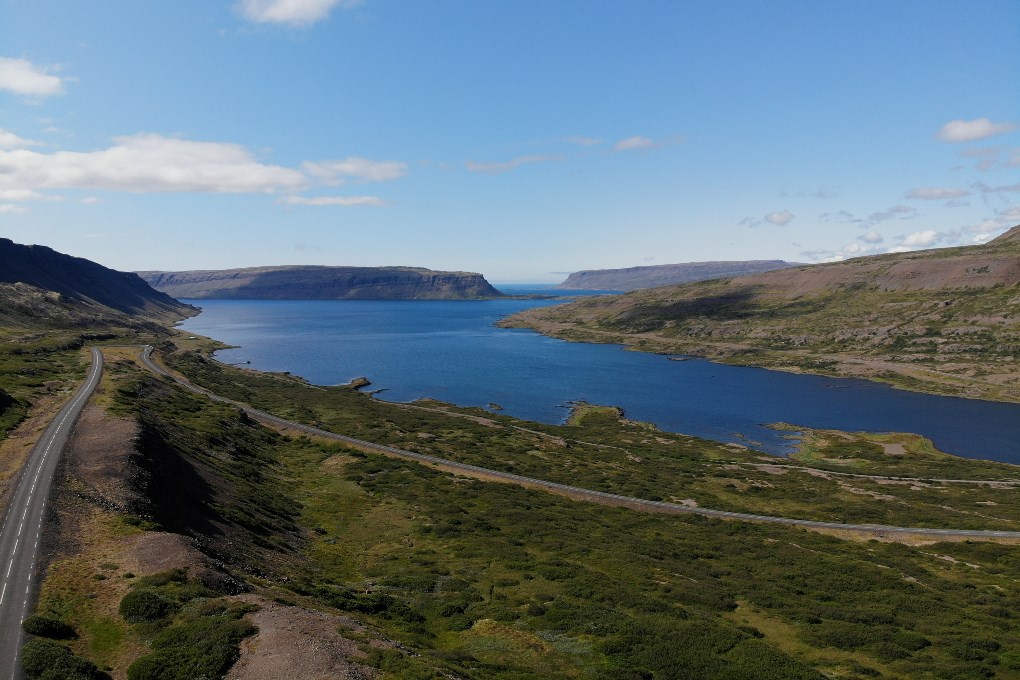
If you're not interested in driving and would rather fly, you'll find this is your most convenient and fastest option. The region is home to three airports, and all of the airports are serviced from Reykjavik. The flight takes under an hour, but do note that flights are much more limited in the winter months, December through February.
While public transportation in Iceland isn’t terribly robust, you can still find bus service to the Westfjords, from towns all over the country. However, the bus routes only connect you to the towns in the region, so you'll need to arrange for other transportation to get you to where you're going from there.
For ferry service, the ferry will transport you between Stykkihólmur and Brjánslækur. The ferry runs twice daily from June until August, with once-daily service in the spring and fall.
How to Get Around in the Westfjords
Once you're in the Westfjords, you have to get around the region. Luckily, if you've rented a car and driven to the area, you're already set. You can continue on with your West Iceland road trip with no issues.
Even if you travel to the Westfjords by bus or plane, you'll find that you still need a car once you get to the area, if you want to get around at all, outside of the main towns. There are few guided tours and other options that provide transportation in the region.
Renting a car and driving to the Westfjords on your own is your best option not only for getting to the region, but also getting around the region and seeing the sights.
How to choose the best rental cars to drive in the Westfjords
So, if you've decided to rent a car to drive in the Westfjords (great choice, by the way!), then you’ll want to ensure that you rent the best car for your visit.
Unlike on the F-roads in the Highlands, it is legal to drive any type of car on the Westfjords roads. However, if you rent a 2WD vehicle, you will find that you're a little limited in terms of where you can go. A 4x4 car ensures you can travel along the more remote, gravel roads that may not receive the same maintenance as some of the more well-travelled roadways.
It’s worth noting, though, for winter, even if you don't plan on leaving the main towns in the Westfjords, you still need a 4x4 car, SUV or campervan. The rough winter weather in Iceland can make for slippery, icy roads and deep snow piles, which require a larger, more capable vehicle for optimum safety.
So, if you’re travelling …
- In the summer
- With only one or two other people and not much luggage
- Only around the area’s towns and on paved roads
… Then rent a 2WD economy vehicle or campervan.
If, however, you're travelling…
- In the winter (or even spring or fall, when snow storms can pop up without warning)
- With a family or more than two people, or lots of luggage
- Around the area’s more remote regions
… Then go ahead and rent that 4x4 vehicle or campervan, to be best prepared.
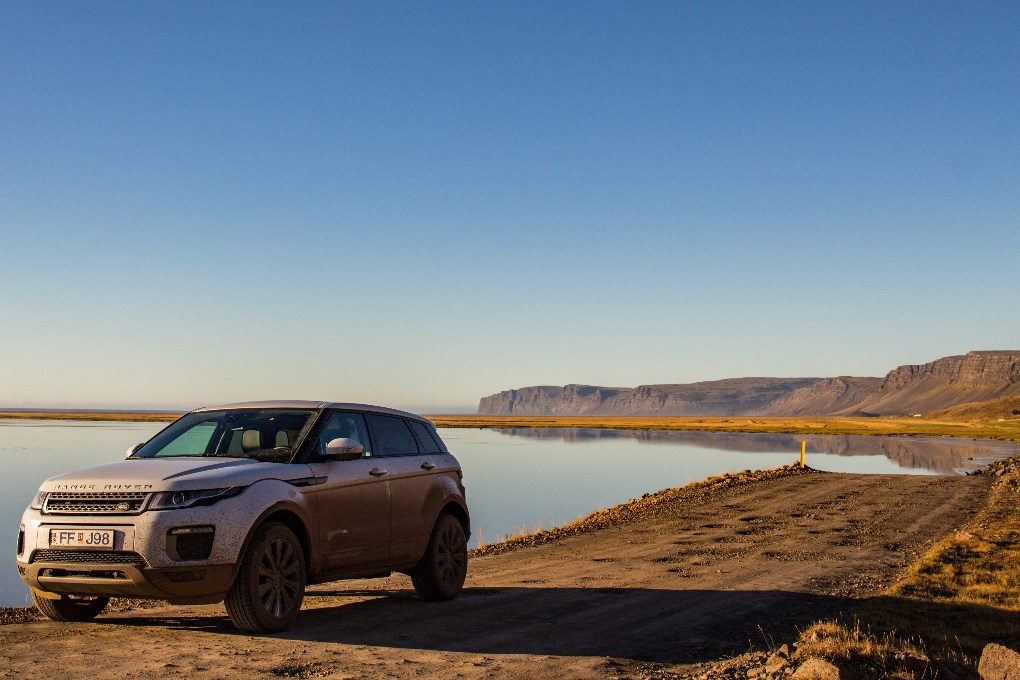
And whatever vehicle you rent to get you around Iceland, make sure to get the proper insurance, too, especially insurance that includes gravel protection, so you're covered in the event the area’s gravel roads damage your rental car's undercarriage, windows or paint job.
Do I need a 4x4 to drive in the Westfjords?
You don't need a 4x4 vehicle in the Westfjords if you visit during the summer months and if you stay on paved roads. (Though, do keep in mind that, even on paved roads, some of these roadways aren't very well-maintained, so you might experience quite the bumpy ride if you opt for an economy car rather than a 4x4 vehicle.)
However, if you visit during the fall, winter or spring months, you will need a 4x4 vehicle to drive in the Westfjords, regardless of where you plan to go. The road conditions can be difficult throughout the entirety of the region.
Also, it's important to remember that the F-roads around Iceland are not accessible via 2WD vehicles, under any circumstances, according to Icelandic law. While F-roads are more popular in the Highlands, the Westfjords are home to one F-road, the F66, which crosses through the central part of the region, connecting the northern and southern areas of the Westfjords. This F-road features some small river crossings and very steep terrain (it's one of the most mountainous roads in the country!) and a 4x4 vehicle is legally required to drive on it.
Even if you're not travelling on F66, you may find that, in some situations, you’re just more comfortable with a 4x4 vehicle. Some attractions are only accessible via mountain passes that feature very sharp drop-offs and tight corners, which can be quite uncomfortable when driving a 2WD car. Likewise, even in the summer, rain can make the roads muddy and slick, and a 4x4 vehicle can give you peace of mind and extra traction.
Can I travel the Westfjords in a campervan?
Yes! You can easily travel the Westfjords in a campervan, as there are quite a few campsites in the area, allowing you to take full advantage of the natural surroundings as you sleep, eat and relax right in the centre of it all.
Lava Car Rental offers both 4x4 and 2WD campervans, though a 4x4 campervan is recommended so that you can drive everywhere you like, during every season.
Driving in the Westfjords
How long does it take to drive around the Westfjords? How many days do you need for the Westfjords?
If you want to see the full of the Westfjords, you'll want to set aside at least three full days for exploring (not including the days that you arrive and depart). This will allow you lots of time to slowly make your way around the region, carefully, so you can see all of the sights without rushing.
What are road conditions like in the Westfjords?
The Westfjords are very mountainous, wild and rugged — and so are the Westfjords’ roads. While you may have driven the Ring Road in Iceland in the past, don’t make the mistake of assuming that the Westfjords roadways are similar to what you've already seen. While the Ring Road, as well as the roadways around the Golden Circle and Reykjavik, is very well-maintained, that’s not always the case in the Westfjords. The ruggedness and low traffic numbers mean that the Westfjords roadways get less attention, making for more gravel roads, rougher roads and fewer guardrails.
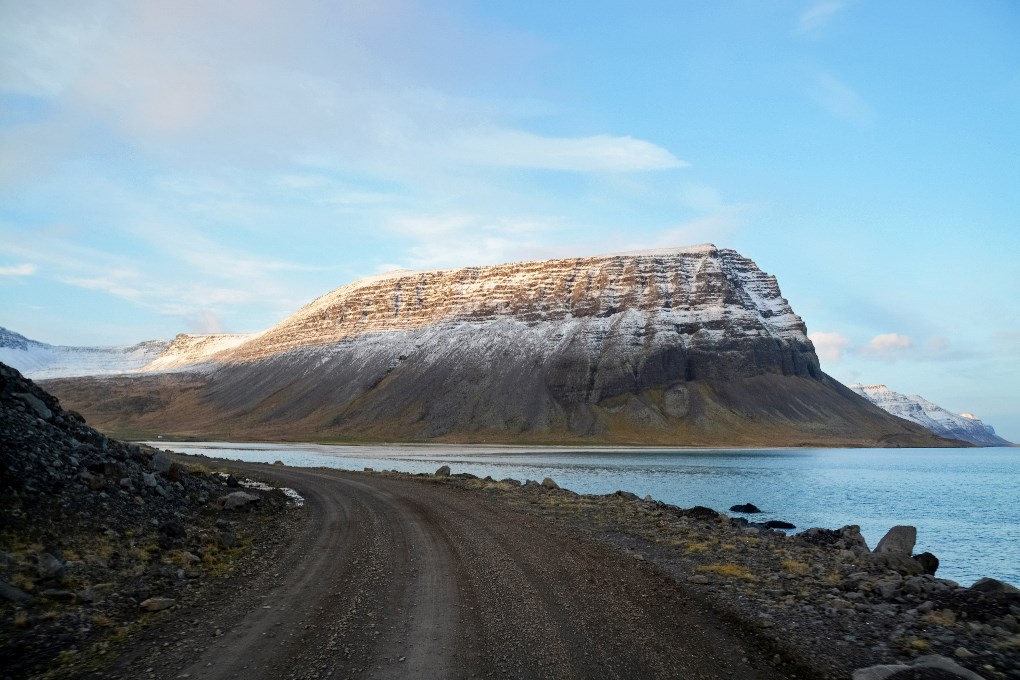
This doesn’t mean that the Westfjords are dangerous to drive around, but it does mean that you need to take special care and precautions to be safe. That means renting a 4x4 vehicle (especially in the winter!), going slow and following Iceland’s driving laws. Safely driving the Westfjords does require a little more time than you might expect (compared to how long it might normally take you to drive a certain number of kilometres), but you can build this slow-going into your three-day Westfjords itinerary with ease.
Tips for driving the Westfjords
To keep you safe as you drive around the Westfjords, here are a few helpful tips:
- Make sure you plan ahead and stay in the know regarding road conditions.
Check road.is both before and during your trip to keep an eye on road conditions. Do the same for weather at vedur.is.
For the best in safety, traction, clearance and room, go for a 4x4 vehicle, regardless of the season. You’ll be glad you did when you’re winding your way through those steep mountain passes.
- Give yourself a full 3 days to see the area.
Rushing can lead to mistakes. Don’t rush your way through the Westfjords. Instead, go slow and give yourself plenty of time. Plan to spend at least three full days in the area, not including your departure and arrival days. If visiting in the winter, you may want to plan for more than three full days, just in case inclement weather disrupts your itinerary.
- Fill up your tank and pack the essentials.
Fuel stations are scarce in the Westfjords, so fill up as needed and, even if it's not entirely needed, fill up anyway, if you see a fuel station nearby. You never know when you’ll end up needing fuel and not be able to find it. To account for these situations, consider packing extra fuel in a portable fuel jug in your rental car's trunk. You may want to pack other essentials as well (as is wise when travelling in any remote area), such as extra water, food and a first aid kit.
- Don’t skip the landscapes!
Don’t rush between points of interest while driving around the Westfjords! The panoramic landscapes are what make the Westfjords special. As you take your time driving around the region, don’t pass up the opportunity to stop (where it’s safe to do so!), take in the scenery and snap a few photos.
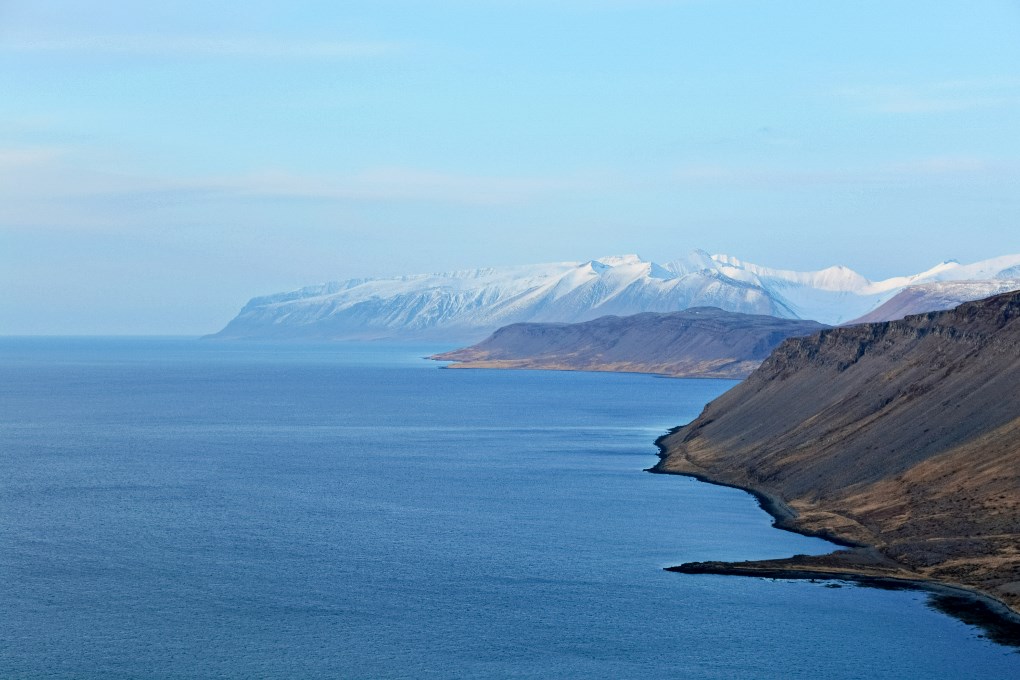
The Best Time to Visit the Westfjords
While it’s possible to visit the Westfjords during the winter, for the best possible experience and the highest level of safety, visit during the summer. Not only are the Westfjords roadways more dangerous during the winter, but many are actually closed, so visiting during the winter would mean not getting to see all of the region. There are many other things to do and see in Iceland during the winter, and your time will be best spent elsewhere. Save the Westfjords for summer.
Keep in mind that Iceland’s seasons are a bit extended or shorter than the seasons you might be accustomed to. While many think that winter weather really only occurs in December to January, Iceland can experience snow storms as late as May or as early as September. To best avoid poor weather and enjoy a full summertime experience in the Westfjords, plan your visit for June, July or August.
Can I visit the Westfjords in winter?
While it's possible, it's not recommended. Winter in the Westfjords can be extremely snowy, icy and stormy, and getting around can be difficult or, in some cases, even impossible. Save yourself a headache and visit during the summer months.
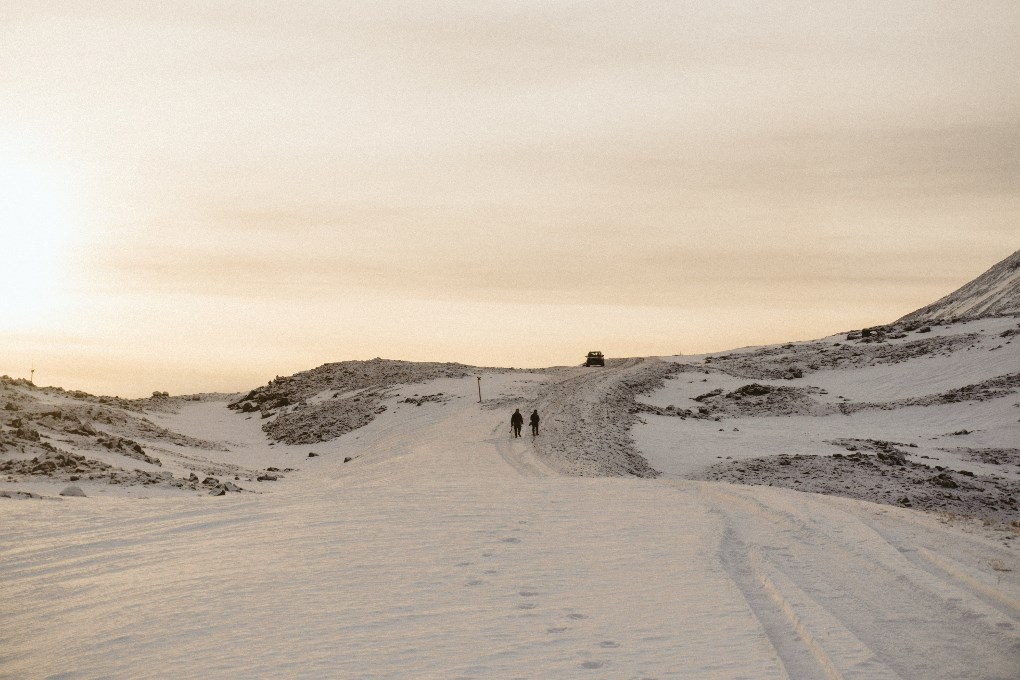
Planning Your Iceland Westfjords Itinerary: What to See and Do
So what can you actually do and see while you're in the region? Here are some of the top spots to add to your Iceland Westfjords itinerary.
- Dynjandi Waterfall
Only accessible during the summer months, Dynjandi waterfall is called the Jewel of the Westfjords and is the region’s largest waterfall. Visiting requires a 15-minute hike up a steep, rocky path, but if you give it a quick climb, you'll be well-rewarded for your efforts, as you gaze up at this 100-metre waterfall.
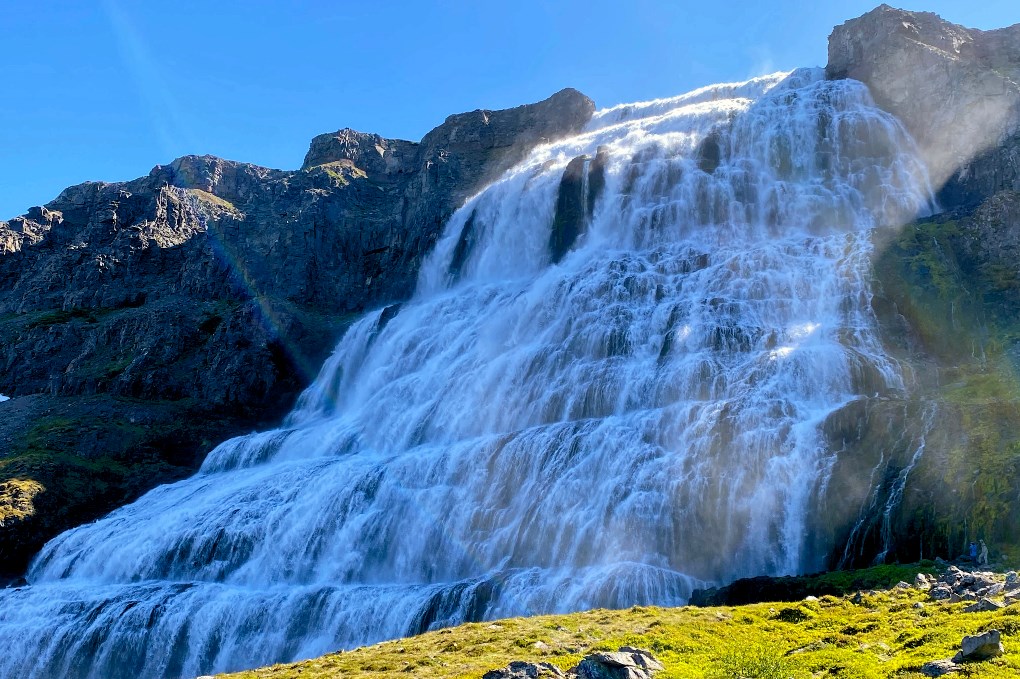
- Latrabjarg Cliffs
If you mention “wildlife watching” and “the Westfjords" in the same sentence, many Icelanders will automatically assume you're visiting the region to see the puffins. The Westfjords welcomes a huge puffin population in the summer, and the best place to see the puffins is at the Latrabjarg Cliffs.

- Rauðasandur Beach
This very long, pink-hued beach is remote and flanked by cliffs and grasslands. It’s a gorgeous spot to spend a while in the summer, and is known as a top photography spot in the Westfjords.
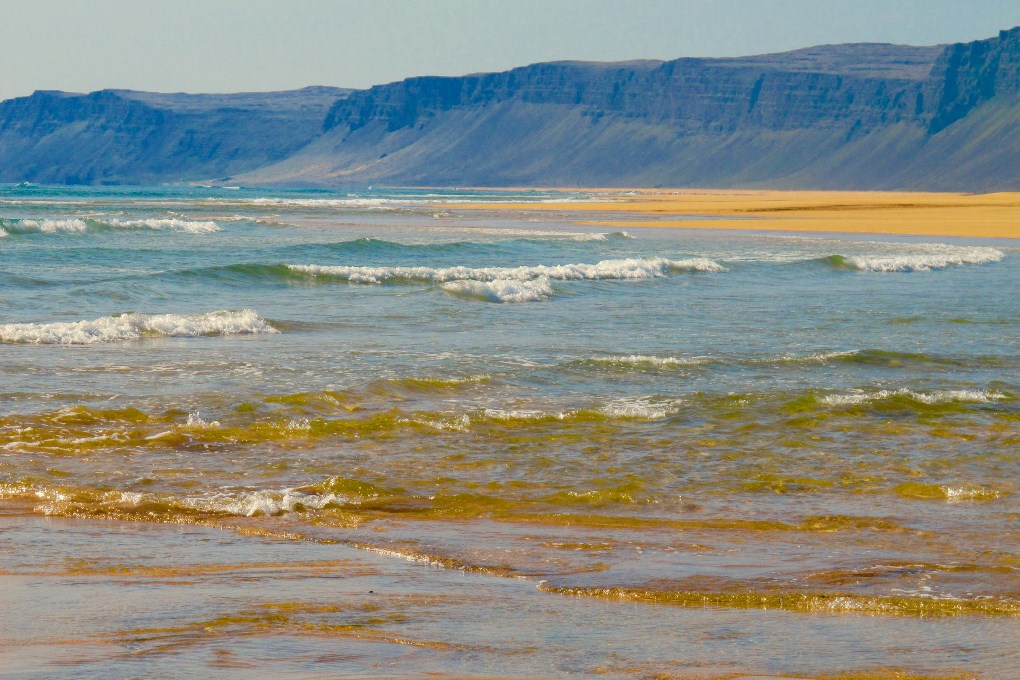
- Hellulaug
This geothermal pool is relatively easy to visit, as it’s just a short walk off the highway. The pool typically sits at around 38 degrees Celsius or 100 degrees Fahrenheit, making it a lovely little spot to take a quick dip. Be sure to pack your swimsuit!
- Krossneslaug
A more developed geothermal pool, this remote swimming pool with its natural geothermal waters overlooks the ocean, for a one-of-a-kind experience.
- Drangajokull glacier
Accessible via Road 635 and only via 4x4 vehicle (even in the summer), this is Iceland’s fifth-largest glacier, the northernmost glacier in the country, and the only one in the Westfjords. See the glacier via the Kaldalon Trail, a relatively easy route for most hikers that takes under two hours.
- Hornstrandir Nature Reserve
This nature reserve is only accessible via boat, but if you take the ferry service to the reserve, you'll be treated to beautiful hiking opportunities. Do note that there are no services or facilities once you arrive, so it is a very remote spot and you need to be prepared accordingly.
- The Fjords
Of course, you can't visit the Westfjords of Iceland without seeing the actual fjords. A road trip around the region is the best way to see these fjords.
- Gardar BA 64
This unique attraction sits in the Skápadalur Valley. The oldest steel ship in Iceland, it’s been run aground and there it still sits on the shoreline. It acts as a popular backdrop for photos.
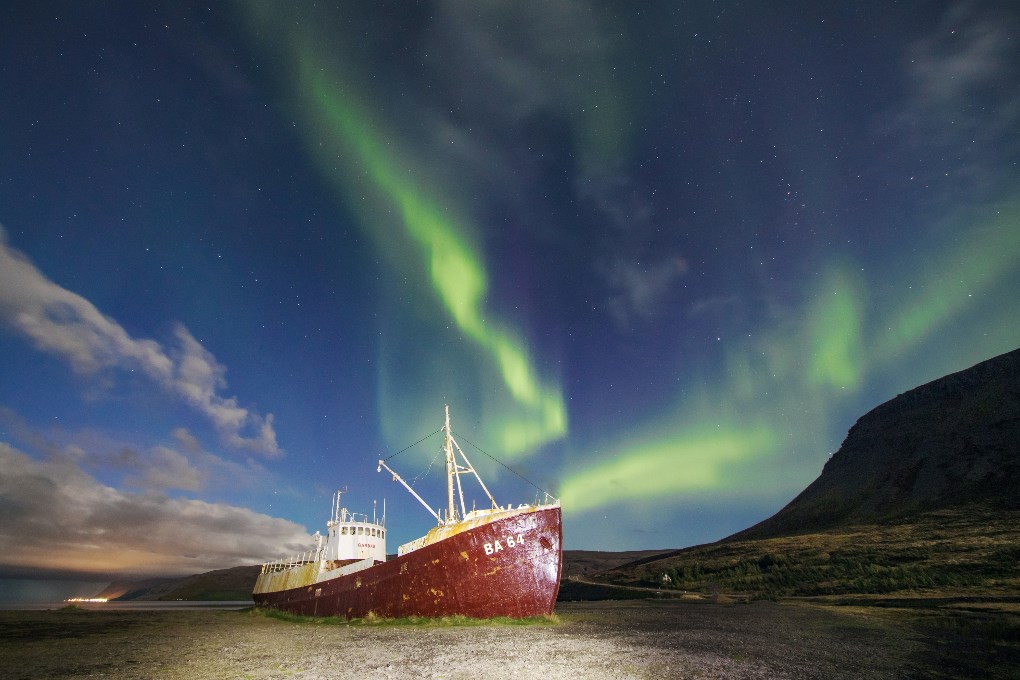
- The Arctic Fox Centre
The Arctic Fox Centre is entirely focused on Iceland’s only native terrestrial mammal. If you visit the centre, you can explore the educational exhibition that details the history and biology of the arctic fox, as well as the long relationship between fox and man.
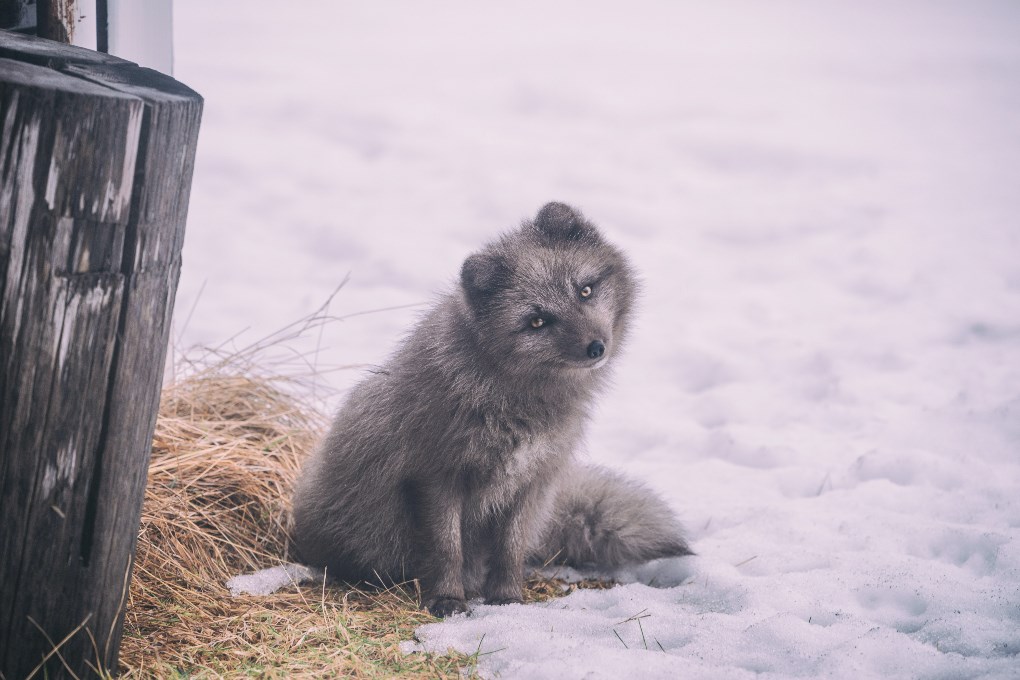
- Litlibaer
This farmstead was built in the late 19th century and now features a series of turf houses and a museum, where you can learn more about the region's history and how Westfjords residents may have lived in the late 1800s.
- The Old Herring Factory at Hotel Djupavik
If you stay at Hotel Djupavik while in the Westfjords (or just stop by), you can catch one of the hotel’s tours of the old herring factory that was once the largest in the country, as well as the largest overall concrete structure in Iceland.
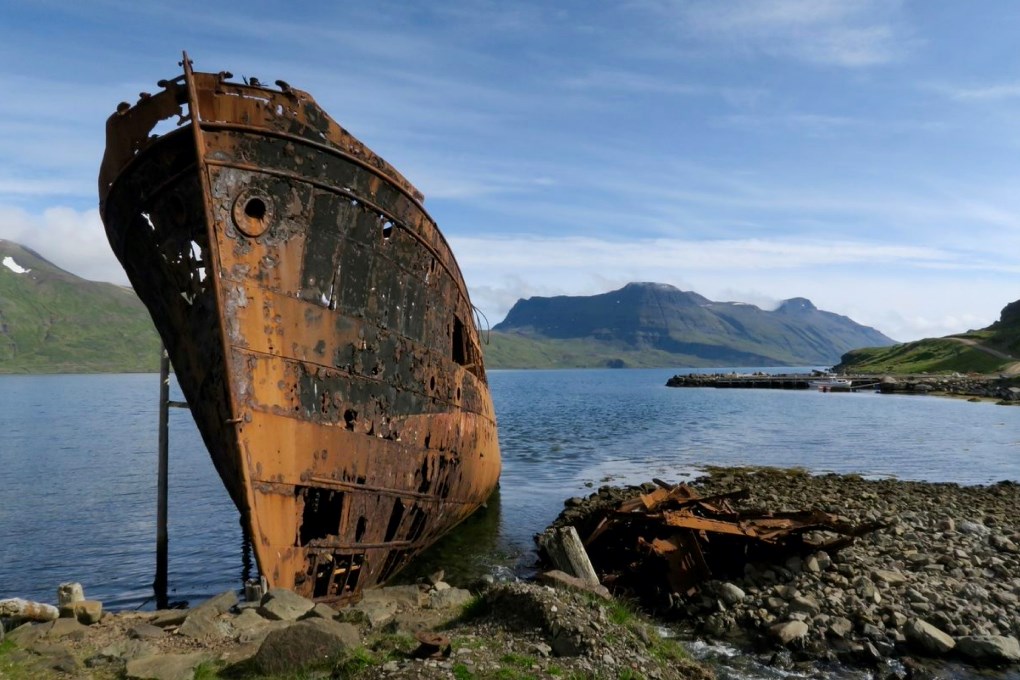
- Museum of Icelandic Sorcery & Witchcraft
This popular museum opened more than two decades ago and still welcomes thousands of visitors each year. Learn about the country's relationship with sorcery and witchcraft, with guides available in a multitude of languages.
Towns to Visit in the Westfjords
Looking specifically for towns to visit or stay in, while in the Westfjords? Try…
- Isafjordur
The town, with its wooden and tin houses built as late as the 1700s, features lots of Westfjords history and dramatic scenery that you may recognize from popular Icelandic photography. Stop by the cultural centre, as well as the Westfjords Heritage Museum.
- Patreksfjordur
This small fishing village only has a few hundred residents, but it’s still the largest town in the southern Westfjords. Nearby, you’ll find Latrabjarg and the puffins.
- Holmavik
Another small fishing village, Holmavik is home to the Museum of Icelandic Sorcery & Witchcraft, as well as the Sheep Farming Museum.
- Reykholar
At just about 100 residents, Reykholar is extra-small, but it offers lots of beautiful scenery, sea views, mountains, a campsite, pool and summertime amenities for travellers.
- Flateyri
This small and historic village has acted as a trading post since the late 1700s. Today, visit it for its unique museums, such as the Doll Museum, Nonsense Museum and the town museum that also doubles as a bookstore.
Map of the Westfjords
Are the Westfjords of Iceland Worth It?
Absolutely! The Westfjords is a great region to visit, with lots to do, few tourist crowds and spectacular scenery for days. Whether you're interested in seeing the natural wonders of Iceland, the waterfalls and fjords, small villages, hot springs or wildlife, you can find all this and more in the Westfjords.
Start Your Westfjords Adventure with Lava Car Rental
Start your Westfjords adventure when you book your rental car with Lava Car. With a large selection of 4x4 vehicles available, you’ll find exactly the rental car you need to get on the road, as soon as you arrive in Iceland. Check out our full selection and book your Iceland rental car today.




